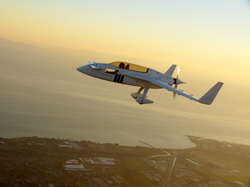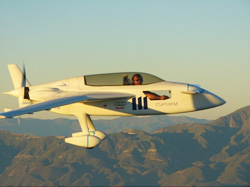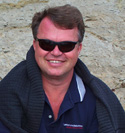 Pilots usually think of airplane flight performance in terms of gallons an hour—not miles per gallon.
Pilots usually think of airplane flight performance in terms of gallons an hour—not miles per gallon.
AOPA member and aeronautical innovator Klaus Savier, owner of Light Speed Engineering based at Santa Paula Airport (SZP) in Southern California, has been setting speed and efficiency records for two decades in his experimental, Rutan-designed Vari-EZ—a plane that serves as a technology demonstrator for products that hint at possibilities for improving the efficiency of the GA fleet.
“Efficiency and speed go hand in hand,” said Savier, a German-born engineer, glider pilot, and composite materials expert. “They’re so closely related that it’s really a matter of emphasis. Do you go as fast as possible and disregard how much noise you make and fuel you burn? Or do you optimize the airframe, engine, and propeller for maximum efficiency? To me, achieving speed through efficiency has always been more elegant.”
Savier has altered his Vari-EZ and its Continental 0-200 engine by adding computerized fuel injection and ignition systems of his own design. He typically flies at 190 KTAS while getting a Prius-like 50 miles per gallon. If he slows to extend range, Savier’s mileage approaches 100 miles per gallon.
 Although his Vari-EZ carries just 30 gallons of fuel, Savier has flown it nonstop to Oshkosh, Wis., (1,522 nm) and Panama City, Fla., (1,700 nm).
Although his Vari-EZ carries just 30 gallons of fuel, Savier has flown it nonstop to Oshkosh, Wis., (1,522 nm) and Panama City, Fla., (1,700 nm).
To improve the flight efficiency of the GA fleet, Savier says magnetos need to be replaced, once and for all, with electronic ignitions, and engines need the kinds of precise fuel injection that allows his Continental to run an almost incomprehensible 300 degrees lean of peak. In fact, Savier says his engine runs so lean, and so cool, that he has trouble keeping cylinder heads and oil temperatures warm enough at altitude—even though his engine has no oil cooler.
On a typical long-distance flight, Savier flies at an altitude of 17,500 feet, about 35-percent power, full throttle, 190 KTAS, burning 3.5 gallons of fuel per hour. He has flown his Vari-EZ about 4,500 hours during 20-plus years of ownership and collected mountains of data. Switching to electronic ignition and computerized fuel injection, he says, would improve the GA fleet’s flight efficiency 20 percent without any airframe modifications.
 Klaus Savier, owner of Light Speed Engineering
Klaus Savier, owner of Light Speed Engineering
Savier tires of what he calls the aviation industry’s circular arguments about the merits of electronic ignition, computerized fuel injection, and lean-of-peak operations. Definitive answers, he says, have been provided by the automobile industry and verified in a variety of aircraft and engines over tens of thousands of hours.
“As long as you have magnetos, you simply can’t get the large spark from a big electrode gap or advanced timing you need for peak efficiency,” he said. “For all these guys that think magnetos are so great, I only have one question: Why don’t you put magnetos in your cars?”



